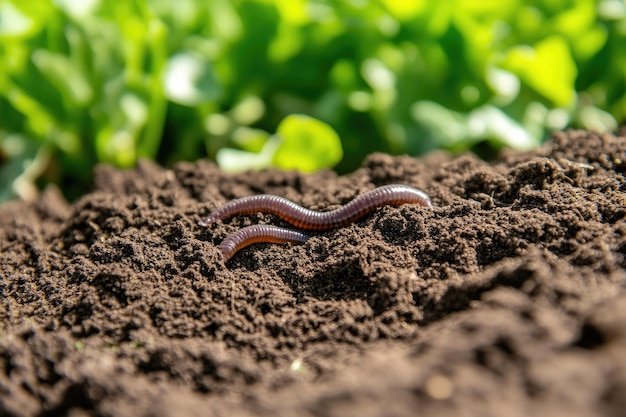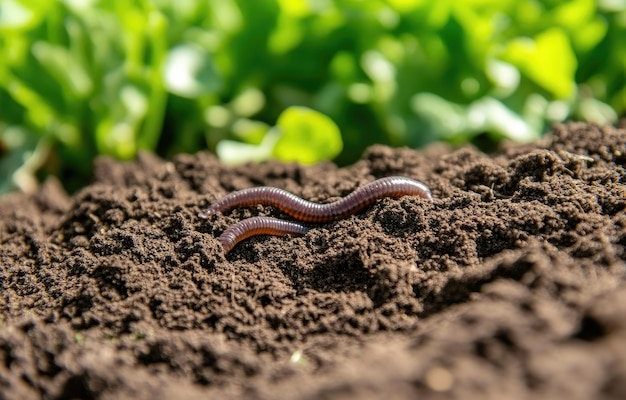
Soil logs are like journals for your soil. They help track changes in soil quality, moisture levels, and—most importantly for this article—earthworm populations. Think of them as your soil’s diary, noting all its little secrets. By keeping tabs on earthworm activity, you can better understand your garden’s overall health, which can ultimately lead to a more flourishing space. Honestly, this isn’t just for the hardcore gardener; even the casual plant lover can benefit from knowing how to monitor earthworm activity with soil logs.
Why Monitor Earthworm Activity?
You might be wondering, why put in the effort to monitor earthworm activity in the first place? Well, earthworms are often considered nature’s little recyclers. They break down organic matter, aerate the soil, and even help with nutrient cycling. Healthy earthworm populations usually indicate healthy soil, which means your plants are more likely to thrive.
Keeping a close eye on earthworm activity allows you to catch issues early. For instance, if you notice a drop in worm activity, it could signal soil compaction or a drop in organic material, both of which can harm your garden. By using soil logs, you can see trends over time. This information can help you make informed decisions about what to add to your soil—like compost or mulch—to keep those little guys happy and hard at work.
Plus, tracking earthworm activity can be a fun project! It’s like being a soil detective. You might discover that certain conditions, like moisture levels or soil pH, have a direct impact on worm populations. And who doesn’t love a little hands-on science?
Setting Up Your Soil Log
Creating a soil log is easier than you might think. All you need is a notebook (or a digital app) and a plan for what you want to track. Start by choosing specific locations in your garden or yard. It’s helpful to have a consistent spot for monitoring so you can see changes over time.
In your log, you should record vital details like:
- The location of your observations
- The date and time of your checks
- Soil conditions (moist, dry, etc.)
- Earthworm counts
You can also note any changes you make to the soil, like adding compost or changing watering schedules. This way, you’ll have a comprehensive view of what impacts your earthworms and, consequently, your soil health.
Here’s the thing: consistency is key. Try to check your soil log weekly or bi-weekly, especially during growing seasons. This routine can help you catch changes early, ensuring your garden stays vibrant and productive.
How to Count Earthworms
Counting earthworms might seem trivial, but it’s a crucial step in monitoring their activity. You can manually check your soil or set up traps. One easy method is to use a small shovel to dig a square foot of soil about 6 inches deep.
Once you have your sample, gently sift through the soil and count how many worms you find. It might take a little practice to get a good feel for it, so don’t be discouraged if it seems tricky at first. You might also want to consider using a **cornmeal or mustard solution** to lure worms to the surface. Just mix up a bit of cornmeal or diluted mustard in water and pour it over your sample area. It encourages worms to rise to the surface, so they’re easier to collect.
After counting, record your findings in your soil log. Over a few weeks, you’ll start to see patterns that indicate changes in your garden’s health.
Understanding Earthworm Behavior
Earthworms are fascinating creatures with behaviors that can tell you a lot about what’s happening in the soil. For instance, did you know that different species prefer different conditions? Some worms thrive in moist, rich environments, while others prefer drier, less organic soils.
If your log shows that certain types of worms are disappearing or becoming less active, it could be an indication that your soil conditions are changing. For example, a sudden drop in moisture could push away moisture-loving earthworms. Monitoring these behaviors can help you adjust your gardening practices to better support these beneficial organisms.
Additionally, earthworm activity varies with the seasons. They tend to be more active in warmer months when the soil is moist and nutrients are abundant. Keep an eye on seasonal trends in your logs, and you might notice connections between weather patterns and earthworm populations that could inform your gardening strategies.
Using Soil Logs for Troubleshooting
If something seems off in your garden—like plants wilting or soil looking compact—you can turn to your soil logs for insights. Maybe you notice a sharp decline in earthworm activity for several weeks. This could indicate issues with soil quality, like a lack of organic matter or harmful chemical imbalances.
For example, if you’ve been using synthetic fertilizers, the high salt content could harm earthworm populations. Your soil log can help you trace back your gardening practices to see what might have led to these changes.
From there, you can make changes. Adding organic materials like compost can often help restore a healthy balance for both the soil and its wriggly inhabitants. Your logs aren’t just records; they’re tools for improving your gardening experience.
Final Thoughts: The Beauty of Soil Logs
Monitoring earthworm activity with soil logs is like having a backstage pass to the vibrant world beneath your feet. Not only does it deepen your understanding of your garden, but it also allows you to be more proactive in promoting soil health. Plus, it can be quite a rewarding experience.
Think of your soil log as your gardening companion—always ready to reveal the unseen story of life below the surface. By tracking earthworm populations, you gain valuable insights that can help your plants not just survive, but thrive. So grab that notebook, get your hands dirty, and start monitoring. You never know what little secrets your soil might reveal!

